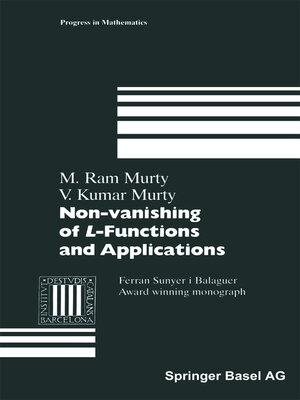
Sign up to save your library
With an OverDrive account, you can save your favorite libraries for at-a-glance information about availability. Find out more about OverDrive accounts.
Find this title in Libby, the library reading app by OverDrive.



Search for a digital library with this title
Title found at these libraries:
| Library Name | Distance |
|---|---|
| Loading... |
This monograph brings together a collection of results on the non-vanishing of L functions. The presentation, though based largely on the original papers, is suitable for independent study. A number of exercises have also been provided to aid in this endeavour. The exercises are of varying difficulty and those which require more effort have been marked with an asterisk. The authors would like to thank the Institut d'Estudis Catalans for their encouragement of this work through the Ferran Sunyer i Balaguer Prize. We would also like to thank the Institute for Advanced Study, Princeton for the excellent conditions which made this work possible, as well as NSERC, NSF and FCAR for funding. Princeton M. Ram Murty August, 1996 V. Kumar Murty Introduction Since the time of Dirichlet and Riemann, the analytic properties of L-functions have been used to establish theorems of a purely arithmetic nature. The distri bution of prime numbers in arithmetic progressions is intimately connected with non-vanishing properties of various L-functions. With the subsequent advent of the Tauberian theory as developed by Wiener and Ikehara, these arithmetical the orems have been shown to be equivalent to the non-vanishing of these L-functions on the line Re(s) = 1. In the 1950's, a new theme was introduced by Birch and Swinnerton-Dyer.







